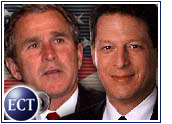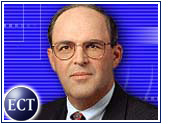Releasing the first of what will be a steady stream of quarterly reports on national Web sales, U.S. Secretary of Commerce William Daley reported Thursday that e-commerce retail sales topped $5.3 billion (US$) for the fourth quarter of 1999.
However, the report found that e-commerce revenues accounted for only 0.64 percent of the total $821.2 billion in U.S. retail sales for the quarter.
The U.S. Department of Commerce e-commerce estimate is based on sales figures that include transactions over the Internet, over extranets, through Electronic Data Interchange (EDI), and other online systems. To reach its conclusions, the Commerce Department’s Census Bureau polled more than 12,000 retail firms selected randomly and weighted their data to represent the estimated 2 million firms now conducting retail business online.
Broad View of Online Sales
By including all types of electronic online sales, not just the Internet, Daley said the Commerce Department’s numbers may differ from the other market research reports that have circulated about the 1999 holiday selling season because of the types of companies it classifies as “retail.” Daley added, however, that he believed that his department’s numbers were the most accurate.
For example, the Census Bureau polled building materials companies, new car dealers, furniture stores, and grocery stores as well as clothing and department stores. The sample, however, did not include travel services, stock brokers or ticket sales agencies.
Coincides with NRF Index
The Commerce Department’s report comes on the heels of a new Internet retail index established by the National Retail Federation (NRF), Forrester Research (Nasdaq: FORR) and Greenfield Online, that shows consumer Internet spending in North America totaled $2.8 billion in January.
Based on that index, which includes online travel agencies in its calculations, observers are predicting the first quarter of 2000 will surpass even the booming 1999 holiday sales season.
The NRF Index captured purchasing in 24 separate categories. The E-Commerce Times has combined these categories into segments as follows:
- Software, books, music, videos and flowers was $711.3 million, or 26 percent of the $2.8 billion total.
- Airline tickets, car reservations and hotel reservations was $582.8 million, or 21 percent of the total.
- Computer hardware, consumer electronics and office supplies was $449.2 million, or 16 percent of the total.
- Apparel, footwear, jewelry and linens/home decorations was $353 million, or 13 percent of the total.
- Health, beauty and food and beverages was $220.5, or 8 percent of the total.
- Toys, video games and sporting goods was $199 million, or 7 percent of the total.
- Other items was $173.1 million, or 6 percent of the total.
- Small appliances, appliances, furniture and tools and garden equipment was $95.6 million or 3 percent of the total.
The survey also indicated that the average dollar amount spent per consumer in January was $202.59.
E-commerce Now Key Measuring Stick
The Commerce Department’s report shows how seriously the federal government now considers e-commerce. “It is very important government puts this out,” Daley said of the new e-commerce report.
He added, “Billions of dollars of decisions are being made by retailers, by manufacturers, by investors, who have a need for accurate statistics.”
Daley also stated that the quarterly e-commerce statistics will be incorporated into a new Census Bureau measurement program that will collect data for annual surveys of manufacturing, wholesale trade, retail trade, food services and accommodations, and information, transportation, business, professional, and personal services.
He added that those reports, which will all now take into account transactions conducted over the Web, shape the federal government’s policy decisions on commerce and trade issues.






































Social Media
See all Social Media